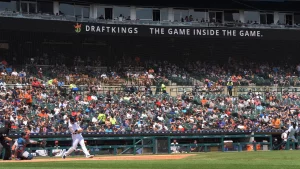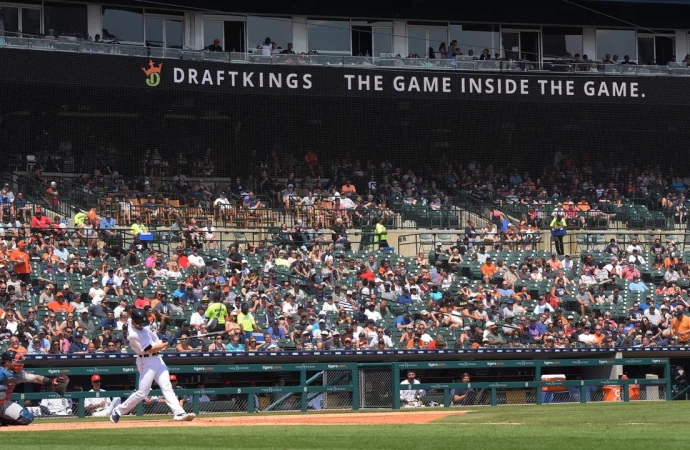Baseball, often referred to as America’s pastime, has a rich history that spans over a century. This sport has evolved significantly, transitioning from a simple recreational activity to a professional, multi-billion-dollar industry. The journey of baseball mirrors the social, economic, and cultural transformations of American society. This article explores the evolution of baseball, examining its
Baseball, often referred to as America’s pastime, has a rich history that spans over a century. This sport has evolved significantly, transitioning from a simple recreational activity to a professional, multi-billion-dollar industry. The journey of baseball mirrors the social, economic, and cultural transformations of American society. This article explores the evolution of baseball, examining its early beginnings, the rise of Major League Baseball (MLB), the impact of integration, advancements in technology, and its current status as a national obsession.
Early Beginnings: The Roots of Baseball

https://media.cnn.com/api/v1/images/stellar/prod/230210082629-file-draftkings-baseball-game-advertisement-restricted.jpg?c=16×9&q=h_720,w_1280,c_fill/f_webp
The origins of baseball can be traced back to the early 19th century. While the exact beginnings are a subject of debate, it is widely believed that baseball evolved from older bat-and-ball games played in England. These games were brought to North America by European immigrants, where they gradually developed into the sport we recognize today.
By the 1840s, baseball clubs began to form, with the New York Knickerbockers being one of the first organized teams. The Knickerbocker Rules, established in 1845, laid the foundation for modern baseball. These rules standardized the game’s structure, including the diamond-shaped field, three-strike rule, and the concept of foul territory.
The Rise of Professional Baseball
The late 19th century marked the beginning of professional baseball. The National Association of Professional Base Ball Players, established in 1871, was the first professional league. However, it struggled with financial instability and was replaced by the National League (NL) in 1876, which still exists today.
The American League (AL) was formed in 1901, and by 1903, the NL and AL champions began facing off in the World Series, a tradition that continues. This period also saw the construction of iconic ballparks, such as Fenway Park and Wrigley Field, which became hallowed grounds for baseball fans.
The Golden Age of Baseball
The early 20th century, often referred to as the Golden Age of Baseball, witnessed the sport’s explosion in popularity. Legendary figures like Babe Ruth, Ty Cobb, and Lou Gehrig became household names. Babe Ruth, in particular, revolutionized the game with his home run-hitting prowess, drawing fans in droves and transforming baseball into a spectacle.
During this era, radio broadcasts brought baseball into homes across America, further cementing its status as the national pastime. The game’s popularity soared, and baseball became a significant part of American culture, reflecting the values and aspirations of the society.
Integration and the Breaking of the Color Barrier
One of the most pivotal moments in baseball history was the integration of Major League Baseball. For decades, African American players were excluded from the MLB, relegated to the Negro Leagues. This changed in 1947 when Jackie Robinson broke the color barrier, joining the Brooklyn Dodgers.
Robinson’s courage and talent paved the way for other African American players, such as Willie Mays, Hank Aaron, and Satchel Paige, to enter the major leagues. This integration not only enriched the sport with incredible talent but also played a significant role in the broader civil rights movement, challenging racial segregation and discrimination in America.
Technological Advancements and Modernization
The latter half of the 20th century and the early 21st century brought significant technological advancements that transformed baseball. Television broadcasts became the primary way fans consumed the sport, with games being broadcasted nationally and even globally. The introduction of instant replay and advanced statistics, known as sabermetrics, changed how the game was played and analyzed.
Stadiums evolved too, incorporating modern amenities and technology to enhance the fan experience. The use of social media and streaming services further revolutionized how fans engaged with the sport, making it more accessible to a global audience.
The Business of Baseball
Baseball has also grown into a major business enterprise. The MLB is a multi-billion-dollar industry, with lucrative television contracts, sponsorship deals, and merchandise sales. Player salaries have skyrocketed, reflecting the financial growth of the sport. The business aspect of baseball has led to debates over issues like salary caps, revenue sharing, and labor disputes between players and owners.
Despite these challenges, the financial success of baseball has contributed to its sustained popularity. The construction of new ballparks, increased marketing efforts, and global outreach programs have all played a role in maintaining baseball’s status as a beloved sport.
Baseball in the Modern Era
Today, baseball continues to be a significant part of American culture, while also expanding its influence internationally. The World Baseball Classic, first held in 2006, showcases talent from around the globe, highlighting baseball’s growing international appeal.
The sport faces new challenges, such as maintaining fan interest in a fast-paced digital age and addressing concerns about player health and safety. However, baseball’s ability to adapt and evolve suggests that it will continue to thrive.
Analysis Table
| Era | Key Developments | Impact on Baseball |
|---|---|---|
| Early Beginnings | Formation of baseball clubs, Knickerbocker Rules | Standardized rules, foundation of the sport |
| Rise of Professional Baseball | Establishment of NL and AL, creation of the World Series | Professionalization, increased popularity |
| Golden Age | Emergence of iconic players, radio broadcasts | Cultural significance, national pastime |
| Integration | Jackie Robinson breaks color barrier | Increased diversity, civil rights impact |
| Technological Advancements | TV broadcasts, instant replay, sabermetrics | Enhanced viewing experience, analytical approach |
| Business of Baseball | Growth of MLB, high player salaries, new ballparks | Financial success, debates over economics |
| Modern Era | Globalization, World Baseball Classic | International appeal, ongoing challenges |
Comparative Table
| Aspect | Past (19th to mid-20th Century) | Present (Late 20th Century to Today) |
|---|---|---|
| Media Consumption | Radio broadcasts, early TV | National/global TV, social media, streaming |
| Player Demographics | Predominantly white, segregated leagues | Diverse, integrated major leagues |
| Technology | Basic equipment, minimal technological intervention | Advanced analytics, instant replay, modern stadiums |
| Financial Aspects | Modest player salaries, limited commercialization | High player salaries, major business enterprise |
| Fan Engagement | Local community events, physical attendance | Global fanbase, digital engagement, online forums |
| Cultural Impact | National pastime, part of American identity | Global sport, diverse cultural significance |
Conclusion
The evolution of baseball from a simple pastime to a national obsession is a testament to its enduring appeal and ability to adapt to changing times. From its early beginnings and the establishment of professional leagues to the integration of players and the incorporation of technology, baseball has continuously evolved while maintaining its core essence. As baseball continues to face new challenges and opportunities, its rich history and cultural significance ensure that it will remain a beloved sport for generations to come.
















